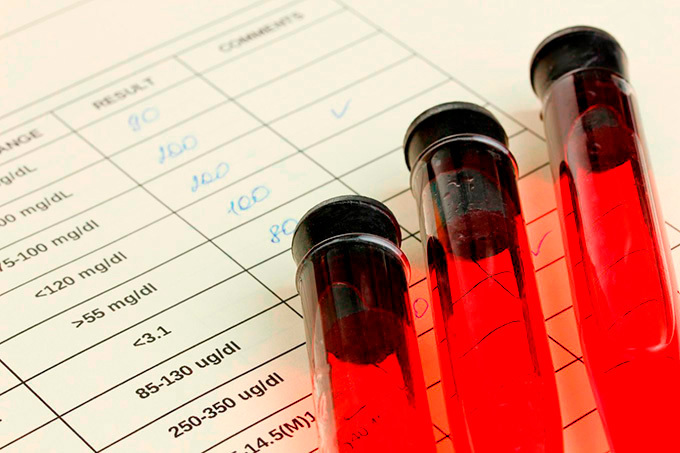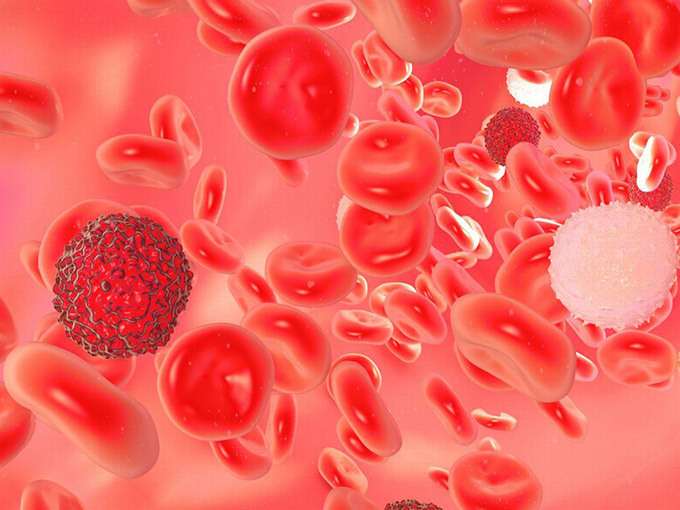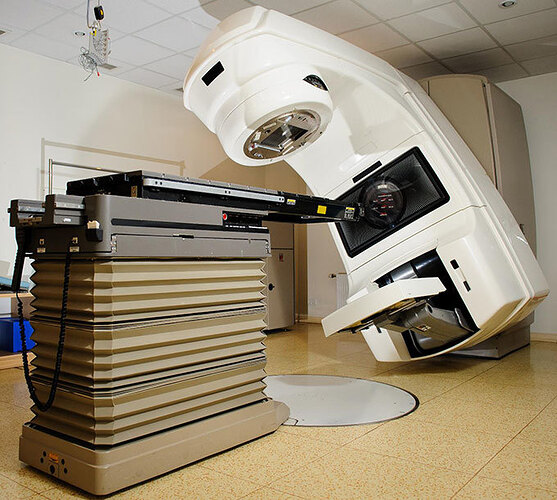Acute myeloblastic leukemia (AML) – is a malignant blood disease that is often referred to nonlymphoblastic leukemia and makes up about 90% of this group of disease structure. Tumors develop from hematopoietic tissue with a primary lesion of bone marrow. Morphological substrate of the malformation is the blast cells called myeloblasts.
The average age of the patients are 67 years, although the illness can develop at any age, affecting also children.
Risk factors of myeloblastic leukaemia include:
Smoking
Hereditary background
Benzene (used in the petroleum refining and chemical industries)
Radiation
Some genetic and chromosomal syndromes (Down syndrome, Li-Fraumeni syndrome, Bloom syndrome, Fanconi anemia)
Elderly age
Male sex
It has been assumed, but not proven conclusively, that risk of developing acute myeloblastic leukemia can be increased by the impact of electromagnetic fields, diesel fuel and gasoline, herbicides and pesticides.

Acute myeloblastic leukemia (AML) - Symptoms
Acute myeloblastic leukemia occurs instantly, mainly with the intoxication syndrome and increased size of the lymph nodes. The main symptoms that occur during this disease are:
Hyperplastic syndrome. The patient has enlarged lymph nodes (asymptomatic), liver and spleen (in 30-50% of cases). 25% of patients may experience the increase in amygdale (tonsils) size. Also, reddish-blue plaques, which are skin leukemic infiltrates, can appear on the skin.
Hemorrhagic syndrome occurs ifthere is the oppression of normal hematopoiesis in bone marrow. It can affect around 50% of patients. Hemorrhagic syndrome manifests itself with a decrease in platelet levels in the blood below 90x109/l. It may be accompanied by a punctate hemorrhagic rash and severe bleedings: nasal, uterine, gastrointestinal.
Often, hemorrhagic syndrome is accompanied by neurological disorders caused by the disruption of the cerebral blood circulation.
Anemic syndrome. 20% of patients have severe anemia when hemoglobin falls below 60 g / l. The level of red blood cells may be 1-1,2x109/ l. Anemic syndrome develops as a symptom of the acute myeloblastic leukemia due to the bone marrow suppression function.
Intoxication syndrome. Weakness, fatigue, general malaise, headache are symptoms of almost all malignant cancers, including acute myeloblastic leukemia.
Neuroleukemia syndrome. The results of leukemic infiltration of brain tissue are expressed with the obvious neurological disorders. Neuroleukemia develops gradually. Focal symptoms accrues, intracranial pressure increases, the function of cranial and peripheral nerves are disrupted.
80% of patients have infectious complications of acute myeloblastic leukemia, which is associated with the suppression of cell-mediated immunity. Infectious processes are mostly of bacterial origin.
These can be: pneumonia, purulent subcutaneous tissue damage, sepsis. Fungal complications are less frequent (20% patients) and even less frequent are viral complications (10% of patients).

Acute myeloblastic leukemia (AML) - Diagnostics
Diagnostics starts with the clinical blood test when the doctor usually finds out the following changes:
Low level of red blood cells and hemoglobin
Low levels of platelets
Decreased or increased level of white blood cells
Bone marrow puncture is conducted on the basis of the symptoms present and the clinical blood test. Bone marrow puncture is the main method of diagnosis of leukemia. The diagnosis is established if more than 20% blast cells are present. Histologic form of acute leukemia is defined using biopsy study.
Not only is the primary diagnosis held through the use of puncture. This method evaluates the effectiveness of the treatment provided:
Reduction of blast cells down to 5% indicates a complete clinical remission
The intermediate state (5-20% blast cells) is called partial clinical remission
If in the future the number of blast cells increases up to 5%, this indicates a possible imminent occurrence of the relapse
Disease relapse can be expressed through the presence of more than 20% of blast cells in the bone marrow punctate
Additional methods of the diagnostics. Other diagnostic methods are used to determine the volume of the tumour cells, evaluate function of internal organs, revealing the foci of the extramedullary leukemic infiltration.
Following methods are used for this purpose:
Imaging methods - ultrasound, X-ray, CT, MRI
Lumbar puncture (cerebrospinal fluid is taken for analysis)
Blood biochemistry is done to determine the activity of the tumour

Treatment of Acute myeloblastic leukemia (AML)
Chemotherapy is the most common treatment. In case of the young age of a patient, a bone marrow transplantation can be performed. Accompanying therapy is of equal importance, as it is supporting the vital functions of the patient’s body and provides an acceptable quality of life.
Induction chemotherapy. Drugs that block the growth of tumour cells are applied here. The goal of the treatment is to achieve a state of clinical remission.
Consolidation is the treatment that a person is provided during remission period. Relapse of the acute myeloblastic leukemia occurs within several months if the consolidation is not used. Therefore, the goal of the consolidation treatment stage is to prevent the relapse.
Stem cells transplantation is one of the variants of consolidation. This operation is more preferable if the age of the patient is less than 30. It is indicated if the adverse prognostic factors of the acute myeloblastic leukemia such as brain damage, a very high white blood cell level is present.
Autologous transplantation (own stem cells) or allotransplantation (biological material from a donor) is used with this procedure. Transplantation of stem cells significantly improves the survival of patients in the long term perspective, but there is a risk of complications, including fatal ending. Allogenic transplantation carries more risks, but this treatment gives the patient a chance of a complete cure from the disease.
Nonmyeloablative transplantation is one of the ways of allogenic transplantation, which doesn’t presuppose the complete bone marrow destruction by the radiation and chemotherapy. It is better tolerated and less likely to provoke complications.
Supporting therapy is aimed at the normalisation of blood parameters and includes the transfusion of the packed red cells, platelet concentrate, prevention and treatment of neutropenic complications.
Leukapheresis refers to the supportive therapy. It is appointed within the early days after diagnosis establishment. The procedure is aimed at reducing the number of leukocytes in the blood.
New in the treatment of Acute myeloblastic leukemia (AML)
The disadvantage of acute myeloblastic leukemia chemotherapy treatment in the elderly is the acute side effects. Sometimes this treatment might reduce the life length, not increase. Besides, chemotherapy is badly tolerated and worsens the life quality of the patient.
That’s why new and better medicines are constantly development and tested to improve the quality of life of patients. These drugs can be used for elderly people treatment with the accompanying somatic pathology.
These medications include:
Sapacitabine
Laromustine
Bortezomib
Tipifarnib
Immunotherapy methods are gradually introduced into the practice of treatment.
Part of the techniques below is used for certain leukemia forms, the other part still during the clinical tests stage.
Monoclonal antibodies. They are represented with the immunoglobulins that contain the cell toxins. Once in the body, the antibodies attach to the tumour cells and destroy them with the toxins.
Check points inhibitors block the signal molecules on the surface of atypical cells, which protect them from exposure to the human immune system. As a result, the immune system starts to destroy tumour cells.
CAR T-cell therapy isthe newest method of immunotherapy. T-cells are taken from the patient’s blood and then changed in the laboratory conditions. The consequence is the possible attachment of T-cells in the human body to the tumour cells. T-cells are taken only one time from the patient’s blood. Further, they are cultured in laboratory conditions and can be used to treat AML for a long time.

